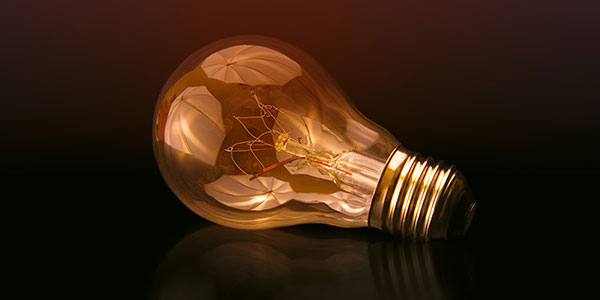A Proficient Rant Concerning Casement Windows
본문
Understanding Casement Windows: A Comprehensive Guide
Casement windows are a popular option among homeowners and architects alike due to their distinct design and functionality. Unlike conventional sliding or Reliable Double Glazing-hung windows, casement windows are hinged at the side and open outward, offering different benefits in terms of ventilation and visual appeal. This article checks out the features, benefits, types, and maintenance of casement windows while attending to some regularly asked questions.

Functions of Casement Windows
Casement windows have unique characteristics that set them apart from other window types. Here are some key functions:

- Hinged Openings: Casement windows are connected to their frame by one or more vertical hinges, permitting them to swing outward, similar to a door.
- Wider Views: Their design usually provides unblocked views, making them an excellent choice for scenic areas.
- Boosted Ventilation: Unlike standard sliding windows, casement windows enable for better air flow considering that they can be opened completely.
- Energy Efficiency: When closed, casement windows produce an airtight seal, which helps to improve energy efficiency and decrease cooling and heating expenses.
- Numerous Styles: They can be found in numerous designs, materials, and finishes to satisfy visual choices and architectural needs.
| Feature | Description |
|---|---|
| Hinged Design | Opens by swinging outward, offering complete ventilation. |
| Air Tight Seal | Offers exceptional insulation properties when closed. |
| Variety of Materials | Readily available in wood, vinyl, aluminum, and fiberglass. |
| Personalized | Provided in different sizes, shapes, and colors. |
Benefits of Casement Windows
The increasing popularity of casement windows features numerous benefits, making them an ideal option for residential and commercial homes. The following are some notable benefits:
- Improved Ventilation: Casement windows can open completely, allowing maximum air flow. This function is especially beneficial in areas that require more fresh air blood circulation.
- Increased Energy Efficiency: Their tight seal reduces air leak, which can result in lower energy expenses with time.
- Enhanced Security: Casement windows are frequently equipped with multi-point locking systems, making them harder to break into than traditional sash windows.
- Alleviate of Use: They are simple to run-- most designs include a simple crank mechanism that permits users to open and close the window with minimal effort.
- Versatile Design Options: With lots of styles and materials offered, casement windows can complement different architectural styles.
Kinds Of Casement Windows
Casement windows can be found in a number of types, each dealing with varied preferences and functional requirements. Here are the common types:
Standard Casement Windows: These are depended upon the side and swing outwards, providing ventilation and views.
Awning Windows: Similar to casement windows however hinged at the top, these windows open outside from the bottom, enabling rain to get in while keeping the area ventilated.
Mix Casement Windows: These Double Glazed Windows involve multiple casement systems organized in various setups, often boosting visual appeal.
Maintenance Tips for Casement Windows
While casement windows are fairly low-maintenance compared to other types, they still need regular care. Here are some maintenance suggestions:
Regular Cleaning: Clean the glass and frame frequently to avoid dirt buildup. Use a moderate soap and water service to avoid damaging the surface.
Inspect Hardware: Check the cranks, locks, and hinges for wear and tear at least once a year. Change any damaged parts to guarantee smooth operation.
Weather condition Stripping: Examine the weather condition removing for signs of wear. This element is important for preserving energy performance.
Lubrication: Apply lubricant to the crank and hinge mechanisms as required to guarantee easy operation.
Casement windows offer a distinct blend of aesthetic appeal, performance, and energy performance. Their hinged design enables ideal air flow and unobstructed views, making them a preferred choice among property owners. Comprehending the benefits and maintenance requirements of casement windows can significantly affect one's choice when selecting the best window solutions.
Frequently Asked Questions (FAQs)
What are the primary products used for casement windows?
- Casement windows are commonly made from wood, vinyl, aluminum, or fiberglass. Each product has its benefits concerning durability, maintenance, and energy performance.
Are casement windows ideal for all climates?
- Yes, casement windows can carry out well in different environments. Nevertheless, property owners must think about particular functions such as boosted weatherproofing and energy effectiveness in severe weather condition conditions.
Can casement windows be installed in existing frames?
- It is possible to set up casement windows in existing frames, however it is advisable to consult a professional to make sure proper fit and function.
How can I enhance the security of my casement windows?
- Consider setting up multi-point locking systems, adding window sensors for alarm systems, and ensuring appropriate maintenance of hardware to enhance security.
Do casement windows featured Energy-Efficient Windows options?
- Most manufacturers use energy-efficient casement windows equipped with Reliable Double Glazing or triple Double Glazing Reviews alternatives, Low-E glass coatings, and thermal breaks to enhance insulation.
By considering the performance, aesthetic adaptability, and energy efficiency of casement windows, both homeowners and builders can make informed choices that deal with their particular requirements. Whether updating existing windows or embarking on a new building project, casement windows can unquestionably enhance convenience and design.


댓글목록 0